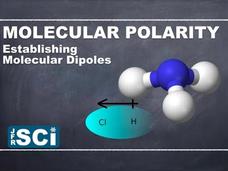Brainwaves Video Anthology
Audette Exel AO - Bridging Worlds
Audette Exel is the Founder of the Adara Group. The Adara Group is a global leader in bridging the worlds of financial services at the highest levels with the world of international development. Audette is the Chief Executive Officer of...
Curated Video
Induction Motor Basics
In this video, we'll explore the basics of induction motors. We'll cover topics like the theory behind induction motors, the different types of induction motors, and how induction motors work.
Professor Dave Explains
IIT/JEE Chemistry Practice #17: Molecular Geometry
Practice REAL problems from actual past IIT/JEE exams with Professor Dave!
Professor Dave Explains
Nef Reaction (Introduction to Umpolung Chemistry)
The Nef reaction is a good way to convert nitronates into carbonyl compounds. This is a technique that can be incorporated into a strategy called "Umpolung", which refers to a reversal of polarity, such that upon converting from the...
TMW Media
Uranus & Neptune, Gas Giants: Characteristics of Neptune and its moons
What did the Hubble telescope notice about Neptune? What are the layers of Neptune made of? What is similar and different about Neptune and Uranus? Uranus & Neptune, Gas Giants, Part 2
Professor Dave Explains
Thin Layer Chromatography (TLC)
Looking at thin layer chromatography as a separation technique.
Curated Video
How does an Electric Motor work? DC Motor explained
DC Motor explained - in this video we look at how does a dc motor work to understand the basic working principle of a DC motor. We consider conventional current, electron flow, the winding, armature, rotor, shaft, stator, brushes, brush...
msvgo
Motion in Combined Electric and Magnetic Fields
This nugget explains how a charge is affected by combined electric and magnetic fields. It explain in detail explanation of application of this phenomenon, the cyclotron.
Professor Dave Explains
The Chemical Bond: Covalent vs. Ionic and Polar vs. Nonpolar
Ionic Bond, Covalent Bond, James Bond, so many bonds! What dictates which kind of bond will form? Electronegativity values, of course. Let's go through each type and what they're all about.
Professor Dave Explains
Column Chromatography
Looking at column chromatography as a separation technique.
Bloomberg
US Needs a New Trade Policy: Peterson Institute's Posen
"We need a new trade policy in the US because we haven't been open," Peterson Institute President Adam Posen says during an interview on "Bloomberg Surveillance."
Follow Bloomberg for business news & analysis, up-to-the-minute market...
Curated OER
Nervous Systems
Explore the nervous system's workings by first looking at the brain and its two hemispheres. Using the example of a split-brain surgery done for epilepsy, the function of language and vision is shown with an interactive component. Paul...
Learning Games Lab
Unavailability of Water in Saline Soils
Viewers of a short video learn about salt and water molecules and how their characteristics determine how they interact with each other. Then, they watch a simulation of how the interaction limits the uptake of water in plant roots and...
American Chemical Society
How Do Hand Sanitizers Work?
Many hand sanitizers claim to kill 99.9 percent of bacteria—is that true? Learners explore how hand sanitizer actually works and how effective it is in an interesting video. They learn how hand sanitizer works to break apart the...
JFR Science
Molecular Polarity
Polar or non-polar, that is the question. Individuals watch a video in the JFR Science playlist to learn about molecular polarity. Using three-dimensional Lewis structures and electronegativity lets them determine polarity of a molecule.
Bozeman Science
Water - A Polar Molecule
Details why the polarity of water is so important to life with a video that explains how polarity impacts cohesion, adhesion, capillary action, high specific heat, and solvents.
Crash Course
Atomic Hook-Ups - Types of Chemical Bonds
Atoms form relationships with other atoms, just like humans. Their relationships are called bonds and there are different types. Explore how energy is transferred between atoms through ionic and covalent bonds.
Crash Course
Water and Solutions - for Dirty Laundry
The Earth is over 70% water and so are our bodies. What makes water so special? Learn about water and its properties as it relates to solutions, dilutions, electrolytes, and molarity.
Ricochet Science
Polar Bonds and Hydrogen Bonds
Hydrogen bonds aren't your run-of-the mill bonds — they make life possible! Use the video to understand how hydrogen bonds form between water molecules.
Steve Spangler Science
Traveling Water - Sick Science! #026
Transfer water from one cup to another without touching it. The amazing properties of water make this wonder occur! Have your young earth scientists conduct this experiment when learning about adhesion, cohesion, and water molecule...
Steve Spangler Science
Color Changing Milk - Sick Science! #018
This visually vibrant activity demonstrates what happens when dish soap weakens the bonds that hold fats and proteins suspended in milk. Perhaps you can have chemistry lab groups perform this activity when they are learning about...
Khan Academy
Khan Academy: Electronegativity: Electronegativity and Intermolecular Forces
Looks at how to discern whether molecules are polar or non-polar, and how to apply that polarity to intermolecular forces. [8:35]











